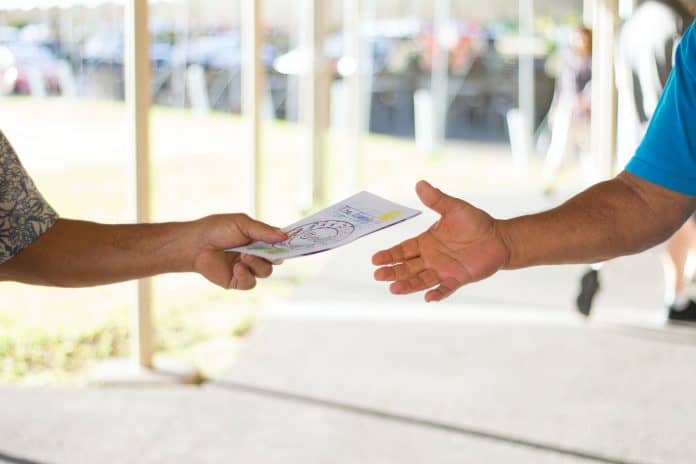Last updated on March 9th, 2023 at 10:35 am
We may be in the digital age, but brochures are still a key component of a successful marketing strategy. Brochures offer many benefits, such as showing your customers that your business is professional and reliable, they are cost effective, easy to distribute, hold a lot of information, and much more. No matter how much online marketing you do for your business, there will always be a time where you will want to physically hand someone a brochure. Here are Printivity’s tips on how to design your company brochure.
Know your brand
First thing’s first, you want to know your brand personality. Before you start designing any marketing materials, you want to establish your brand identity. Make sure your company has instituted a brand style guide and make sure to follow that with all of the elements incorporated in your design. Consistent branding is key to a successful marketing strategy as that will help your audience recognize you from one ad or medium to the next.

Define your target audience
Your target audience is the group of people you are designing your company brochure for. Knowing who you are designing for will help you create a brochure that appeals to the right person. When you are able to identify and get to know your target audience, you will know what services and products you want to offer them, price points that will appeal to them and entice them to buy, what types of marketing materials they will respond best to, and much more. Your target audience will help define the foundation of your marketing efforts.
Establish the goal of your brochure
What is it that you want your brochure to accomplish? This is the first thing you will want to decide before you even start designing your company brochure. The goal could be that you want to increase brand awareness, use them for mass mailings, or have it serve as a portable presentation for an upcoming product or service. The goal will help you narrow down not only the style of the brochure but also what information you want to include. They may hold a lot, but you still want to be strategic with everything you include to make the most out of all of the space.
Let your brochure do the talking
First impressions count. Once you have established the main focus of your brochure, come up with a catchy and relevant headline that will grab your audience’s attention. With all of the brochures out there these days, it is easy to blend in and be forgotten. Avoid having yours tossed straight into the trash by taking the time to craft a visually appealing front page that will draw your audience in and leave them wanting more.
While brochures may hold a lot of information, they are still limited in space. Utilize this space to the best of your ability and take this opportunity to highlight products or services for potential customers for when you are unable to do so personally. Your brochure should hit three main objectives:
- Represent your mission
- Showcase what you have to offer your target audience
- Serve as a successful marketing and sales tool
It is important to leave space for basic information such as your company name, logo, location, and contact information. Including a brief history of your business adds a personal touch that will help establish trust with your audience. The key here is keeping it brief as you do not want to overwhelm your audience with too much information.
Once you have established who you are, where you are located and any other pertinent information, use the remaining space to highlight key products or services you offer. Make sure to include unique selling points so that potential customers can easily distinguish you from your competitors. After all, the main goal of your brochure is to turn your target audience into loyal customers. Leave your audience with a subtle call to action so by the time they have finished reading it they will want to contact you as opposed to tossing your brochure into the trash.
Establish the fold
Once you have your goal and content established, you can decide which brochure design will work best. There is a variety of folding options, the most popular being the half fold, Z fold, and tri-fold. Each option offers its own set of advantages.
- Half fold (or bifold) brochures work well when you need to utilize a lot of space for a large spread. When creating your design layout, you don’t have to worry about as many fold lines interrupting the flow.
- Z fold brochures contain three panels folded into the shape of a ‘z’. This option works best when you want to lead the reader through opening the rest of the brochure. You can start your text on the cover panel and wrap it on the inside. This is a great option for multi-page presentations.
- Tri-fold brochures are the most commonly used style of the brochure. This brochure style is divided into three even sections, with the right and left panel folding over the middle section. Tri-fold brochures are a great style for when you want to present your message in steps.
- Gate fold brochures are achieved by folding two ends to meet the middle, creating a total of six panes. This style is ideal for greeting cards or when you want to showcase larger graphics on the interior.
- Accordion fold brochures fold a larger piece of paper in a zigzag pattern of four or more panels. This offers an interesting presentation, but can become a bit of a nuisance as they do not stay closed as well as other options.
- Double gate fold brochures include two side panels which are folded toward the middle panel and open like a gate, leaving a ⅛” gap to avoid buckling when the final fold is made. The brochure is then folded in half again for a more convenient size. This style is great for use as a menu, sales tool, or a folded self mailer.
- Double parallel fold brochures fold the paper in half, then in half again in the same direction, creating eight panels. This type of fold is great to use when you want to showcase several products. This is also a commonly used fold for maps as it can unfold to reveal a larger image.
- Roll fold brochures fold one section of paper inward and then continue to roll and fold in the same direction, creating eight panels. This type of brochure is often used for takeout menus or brochures that include a tear-off panel. This leaves you with a tri-fold brochure once the tear out is removed.
- 8 page fold brochures start with a half-fold in one direction followed by a half-fold perpendicular to the first, leaving you with eight panels. This style is most often used for newsletters or greeting cards.

Brochure design tips
Now for the fun part; designing. Adobe InDesign is a great graphic design software to use if you are an experienced designer. However, if you are not familiar with Adobe InDesign, there are several other software options to choose from to help you design your brochure.
As tempting as it may be to include everything you possibly can in your design, try not to go overboard. Sometimes simplicity is key. Focus on the message you want your audience to take away and stick with elements that emphasize that. To keep things visually appealing, include high-resolution images only, use three or less fonts, and keep your color scheme simple and on-brand. Following these tips will best help you design your company brochure.
Choose your print materials
The final decision you want to consider before you print your brochure is the material you are going to use. Printivity offers UV coating which is a thin layer of fluid applied to brochure prints for a glossy look. Coated paper gives brochures a polished look and is ideal for professional marketing materials given to customers. You want to ensure that your brochure accurately represents your business and gives the best first impression possible. You can choose from a variety of paper types, from 60 Ib. text, uncoated, which is like copy paper, to sturdier options such as 16 pt “ultra-thick” semi-gloss, which is more like card stock.
Download Printivity’s brochure templates that include all the information you need to create a print-ready file. If you have any questions or are ready to start the printing process, call us at 1-877-649-5463.
Don’t have time for to design your brochure? Printivity has you covered! We are offer graphic design services to help you get your designs ready and printed quickly!




